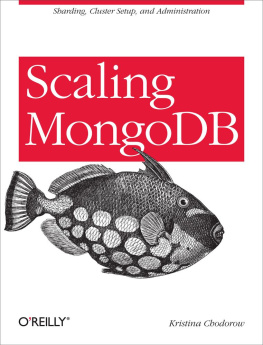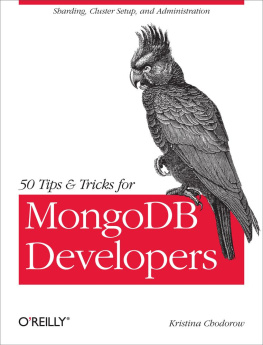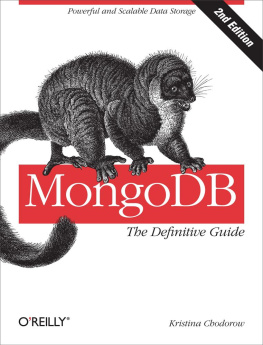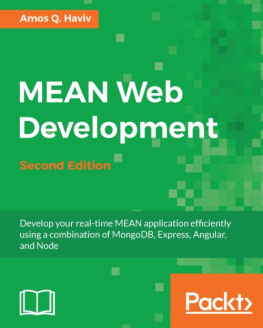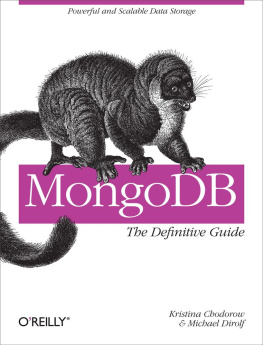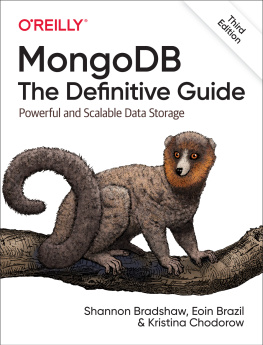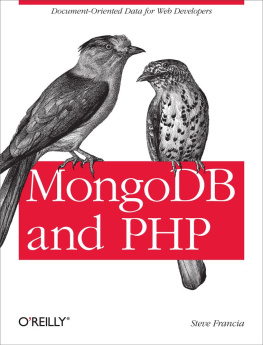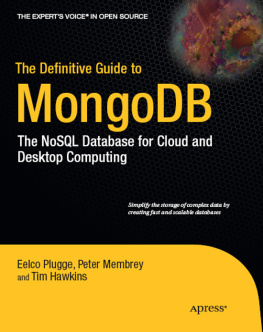Note
Safari Books Online is an on-demand digital library that lets you easily search over 7,500 technology and creative reference books and videos to find the answers you need quickly.
With a subscription, you can read any page and watch any video from our library online. Read books on your cell phone and mobile devices. Access new titles before they are available for print, and get exclusive access to manuscripts in development and post feedback for the authors. Copy and paste code samples, organize your favorites, download chapters, bookmark key sections, create notes, print out pages, and benefit from tons of other time-saving features.
OReilly Media has uploaded this book to the Safari Books Online service. To have full digital access to this book and others on similar topics from OReilly and other publishers, sign up for free at http://my.safaribooksonline.com.
How to Contact Us
Please address comments and questions concerning this book to the publisher:
| OReilly Media, Inc. |
| 1005 Gravenstein Highway North |
| Sebastopol, CA 95472 |
| 800-998-9938 (in the United States or Canada) |
| 707-829-0515 (international or local) |
| 707-829-0104 (fax) |
We have a web page for this book, where we list errata, examples, and any additional information. You can access this page at:
| http://oreilly.com/catalog/9781449303211 |
To comment or ask technical questions about this book, send email to:
For more information about our books, courses, conferences, and news, see our website at http://www.oreilly.com.
Find us on Facebook: http://facebook.com/oreilly
Follow us on Twitter: http://twitter.com/oreillymedia
Watch us on YouTube: http://www.youtube.com/oreillymedia
Chapter 1. Welcome to Distributed Computing!
In the Terminator movies, an artificial intelligence called Skynet wages war on humans, chugging along for decades creating robots and killing off humanity. This is the dream of most ops peoplenot to destroy humanity, but to build a distributed system that will work long-term without relying on people carrying pagers. Skynet is still a pipe dream, unfortunately, because distributed systems are very difficult, both to design well and to keep running.
A single database server has a couple of basic states: its either up or down. If you add another machine and divide your data between the two, you now have some sort of dependency between the servers. How does it affect one machine if the other goes down? Can your application handle either (or both) machines going down? What if the two machines are up, but cant communicate? What if they can communicate, but only very, very, slowly?
As you add more nodes, these problems just become more numerous and complex: what happens if entire parts of your cluster cant communicate with other parts? What happens if one subset of machines crashes? What happens if you lose an entire data center? Suddenly, even taking a backup becomes difficult: how do you take a consistent snapshot of many terabytes of data across dozens of machines without freezing out the application trying to use the data?
If you can get away with a single server, it is much simpler. However, if you want to store a large volume of data or access it at a rate higher than a single server can handle, youll need to set up a cluster. On the plus side, MongoDB tries to take care of a lot of the issues listed above. Keep in mind that this isnt as simple as setting up a single mongod (then again, what is?). This book shows you how to set up a robust cluster and what to expect every step of the way.
What Is Sharding?
Sharding is the method MongoDB uses to split a large collection across several servers (called a cluster). While sharding has roots in relational database partitioning, it is (like most aspects of MongoDB) very different.
The biggest difference between any partitioning schemes youve probably used and MongoDB is that MongoDB does almost everything automatically. Once you tell MongoDB to distribute data, it will take care of keeping your data balanced between servers. You have to tell MongoDB to add new servers to the cluster, but once you do, MongoDB takes care of making sure that they get an even amount of the data, too.
Sharding is designed to fulfill three simple goals:
Make the cluster invisible.
We want an application to have no idea that what its talking to is anything other than a single, vanilla mongod.
To accomplish this, MongoDB comes with a special routing process called

